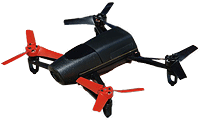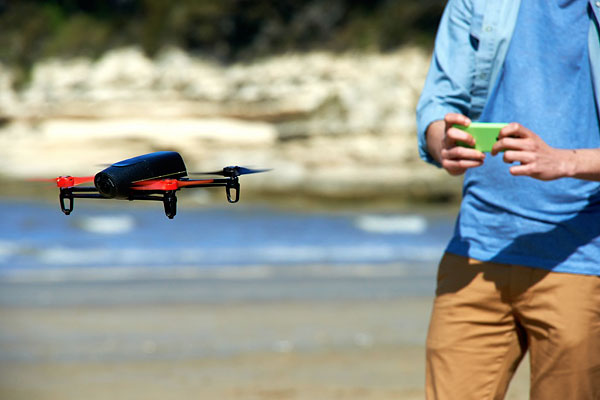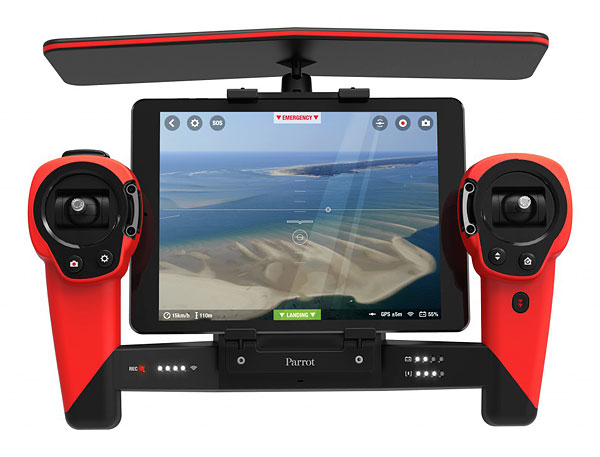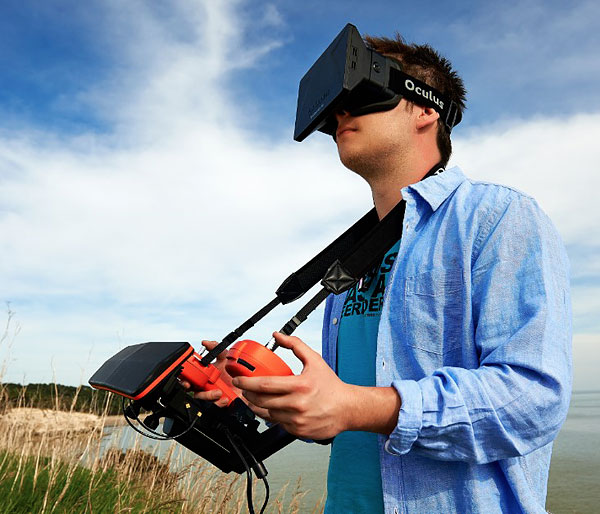Parrot drone overhauled with 14-megapixel camera, mile-plus range and first person view support
posted Monday, May 12, 2014 at 11:48 AM EST

Among aerial photography fans who don't have the time, knowledge or inclination to build their own multicopter, DJI's Phantom-series quadcopters have built quite a following. Before anybody had ever heard of DJI, though, French tech company Parrot was the big kid on the block -- and it's aiming to return to glory with a completely overhauled version of its aerial platform, some five years in the making.
Parrot's earlier AR.Drone and AR.Drone 2.0 were both widely available, not to mention fun -- and extremely easy -- to fly, and both featured built-in front-facing and downward-facing cameras. Neither AR.Drone variant served terribly well as an aerial photography device out of the box, though. The original AR.Drone's front camera was limited to just VGA (640 x 480 pixel) resolution, and even the updated AR.Drone 2.0 could manage only a 720p (1,280 x 720 pixel) video feed. Some users retrofitted their AR.Drones with aftermarket camera mounts (or simply made their own), but an extremely limited payload and short battery life made the more expensive DJI Phantom quads an altogether more attractive proposition.
Now, Parrot is back with the Bebop Drone, a much smaller quadcopter with a high-resolution 14-megapixel front camera. Courtesy of an optional remote control accessory, the Bebop also boasts vastly improved range and a cool Oculus Rift-compatible first person view feature, but out of the box the new quad will operate via Wi-Fi from a smartphone or tablet, just like the original.
The new 14-megapixel camera is still fixed in place, unlike the tilting camera of the Phantom 2 Vision+. That rather limits your possibilities compositionally, but on the plus side, the sensor now sits behind a much wider 180-degree fisheye lens, so you needn't necessarily be pointed directly at your subject to be able to see it. And Parrot has added digital stabilization in the new model, which while it won't rival the three-axis stabilization gimbal of the Phantom 2 Vision+, should certainly yield better results than the unstabilized video from the AR.Drone 2.0.

And while pricing has yet to be announced, we'd expect the Bebop to list at much closer to the US$300 of the AR.Drone 2.0, than to the rather pricey Phantom 2 Vision+ at US$1,300. Parrot is likely to have much broader availability in the US market, as well. It's earlier AR.Drone-series quadcopters were, in part, a big seller thanks to their visibility at retailers like Brookstone.

What you won't get in that list price, though, is Parrot's new attention-grabbing feature -- the Skycontroller. The device, which will provide much greater range, better flight control, and the possibility of a first person view supporting FPV glasses like the much-hyped Oculus Rift, will be sold as an optional extra. Instead of using the touchscreen or tilt sensor of your smart device to control the Bebop Drone -- an initially-cool gimmick that, you later realize, isn't terribly well-suited to precision flight -- the Skycontroller will let you fly using dual control joysticks. Your tablet or smartphone will mount in-between, and your FPV glasses will attach via an HDMI port for a completely immersive, first-person flight experience.

And best of all, the Skycontroller will support 802.11ac Wi-Fi connection to the Parrot Bebop Drone, something your existing smart device almost certainly doesn't allow by itself. That means much greater range -- out to a whopping 1.24 miles (2km), according to Parrot, thanks to greater amplification and four ceramic antennas. By contrast, the AR.Drone 2.0 was limited to a range of just 328 feet (100m), to manufacturer specifications.

The one remaining fly in the ointment, as it were, is the Bebop Drone's flight time. It's still limited to just 12 minutes of flight on a charge, which if you plan on getting the device back after each flight, will reduce the likelihood of you taking advantage of all that added range. That's no better than the stock 12-minute flight time of the AR.Drone 2.0, and actually trails the 18 minutes possible with the earlier model when using an extended-life battery. It's not even close to the 25 minutes possible with the Phantom 2 Vision+.
But then, as we already noted, we're not expecting Phantom pricing, either -- and for a pricetag the rest of us can afford, perhaps changing batteries more often isn't such a big deal! Parrot has yet to announce availability or pricing of the Bebop Drone. Watch this space for more, just as soon as it does!